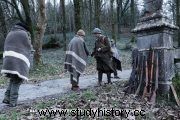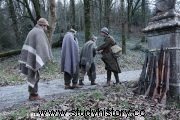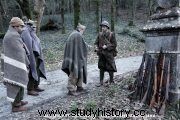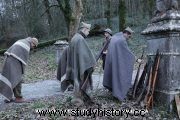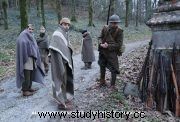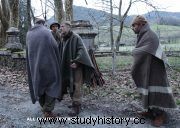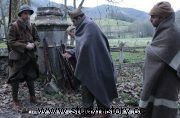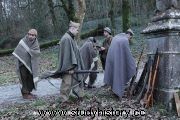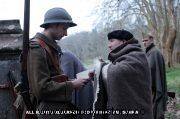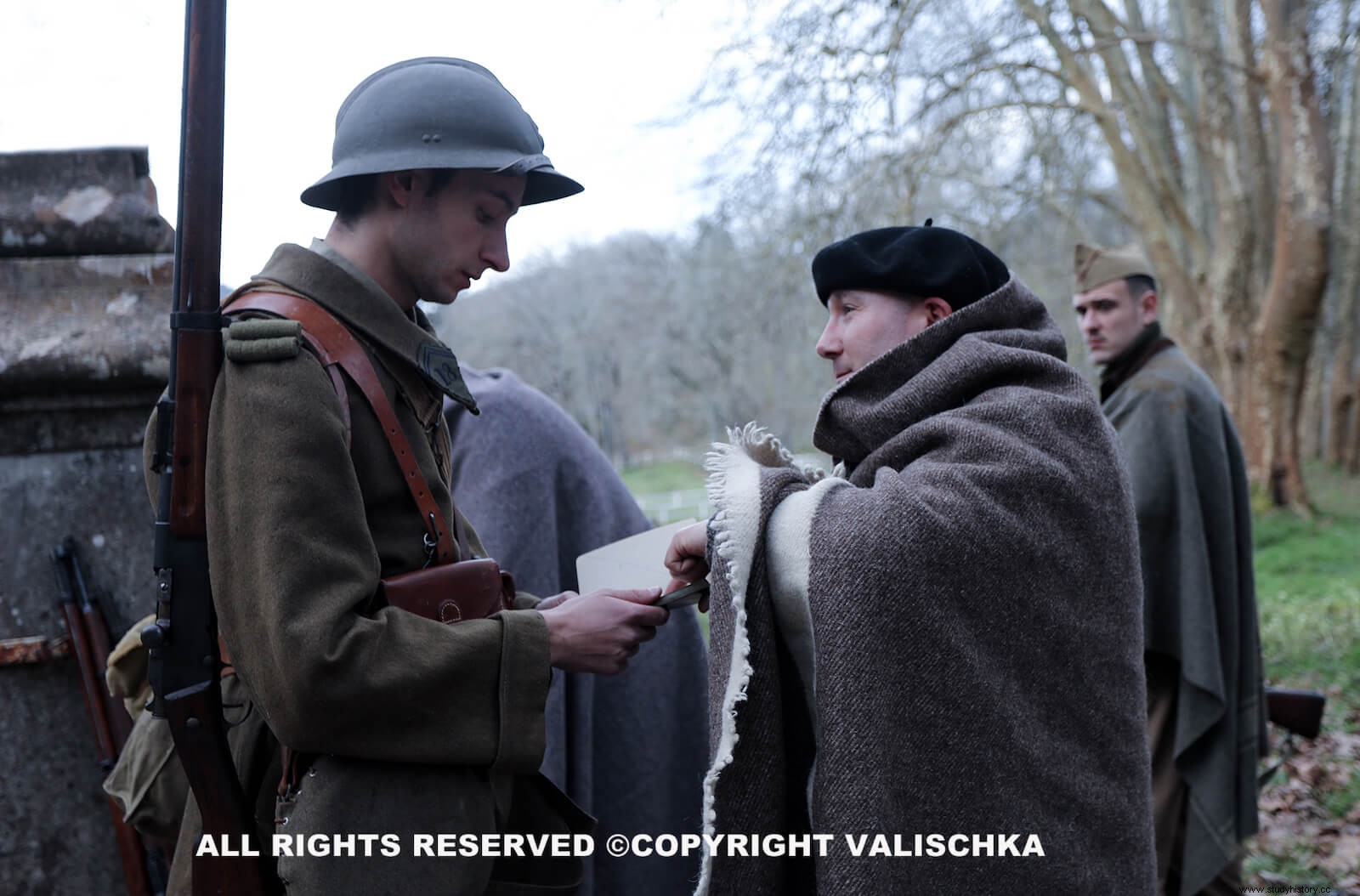
In memory of the exiles of all wars, innocent victims of the greatest drama caused by the foolishness of men.
When Gipuzkoan territory was lost to the Navarrese columns in September 1936, the first mass exodus of refugees to France in the entire Spanish Civil War . A total of 20,000 people embarked for the neighboring country (1), to which we had to add another 4,000 who had already crossed the Irunese border by land (2) –many of these entered the Republican zone again by crossing Catalonia– , but even more significant was the number of those who went to Bilbao, a total of 100,000, which represents, in general figures, half of the population of the whole of Guipúzcoa (3). Faced with the unstoppable advance of the rebel army towards Santander and then Asturias, the Basque Government chartered ships bound for France in which a total of 103,115 people embarked, to which must be added the 5,000 combatants who did so in smaller vessels. The figures of Asturians who left by sea in the last days of October 1937 are around 12,000, but many others had already left before, like the thousands of war children evacuated to different European countries. The total number of refugees from the north who crossed France to return to the republican zone in the autumn of 1937 will be about 100,000, of whom 63,000 were Basques (4); Immediately, those who were combatants joined the Popular Army and many have already taken part in the operations in Teruel.
In early 1939, when Barcelona fell , many of these refugees from the north joined the mass of thousands of people that some authors put at around half a million, and who, together with a defeated army, headed in a sorrowful exodus to France with what they had put on a trip that for many would be only one way, through Le Perthus, Cerbère, Bourg-Madame or Prats-de-Mollo. The border (not only the land, but also the sea) here transcends the merely physical by acquiring a broader symbology than the reductionism to which certain historiography leads us and which results in a collective (or social) memory because it goes far beyond the battlefields or the spaces where the material heritage that sticks to the war itself is preserved, related to fortified or poliorcetic lines (5), entering the merely repressive –prisons, prison camps, graves, etc.– of a way that is transferred "to the field of education in values" (6). This historical fact that has come to be called The Retreat It fully reached civil society, which suffered directly from the cruelty of the war, especially the weakest such as children and the elderly, and whose images, which are extremely topical today in Ukraine, allow us to understand a past that is projected, hand in hand of didactics, to the new generations, favoring a resilience that reinforces our identity as a society. And it is that collective memory is an unfinished project that we must reinforce and pamper with the elements within our reach, in this case historical recreation.
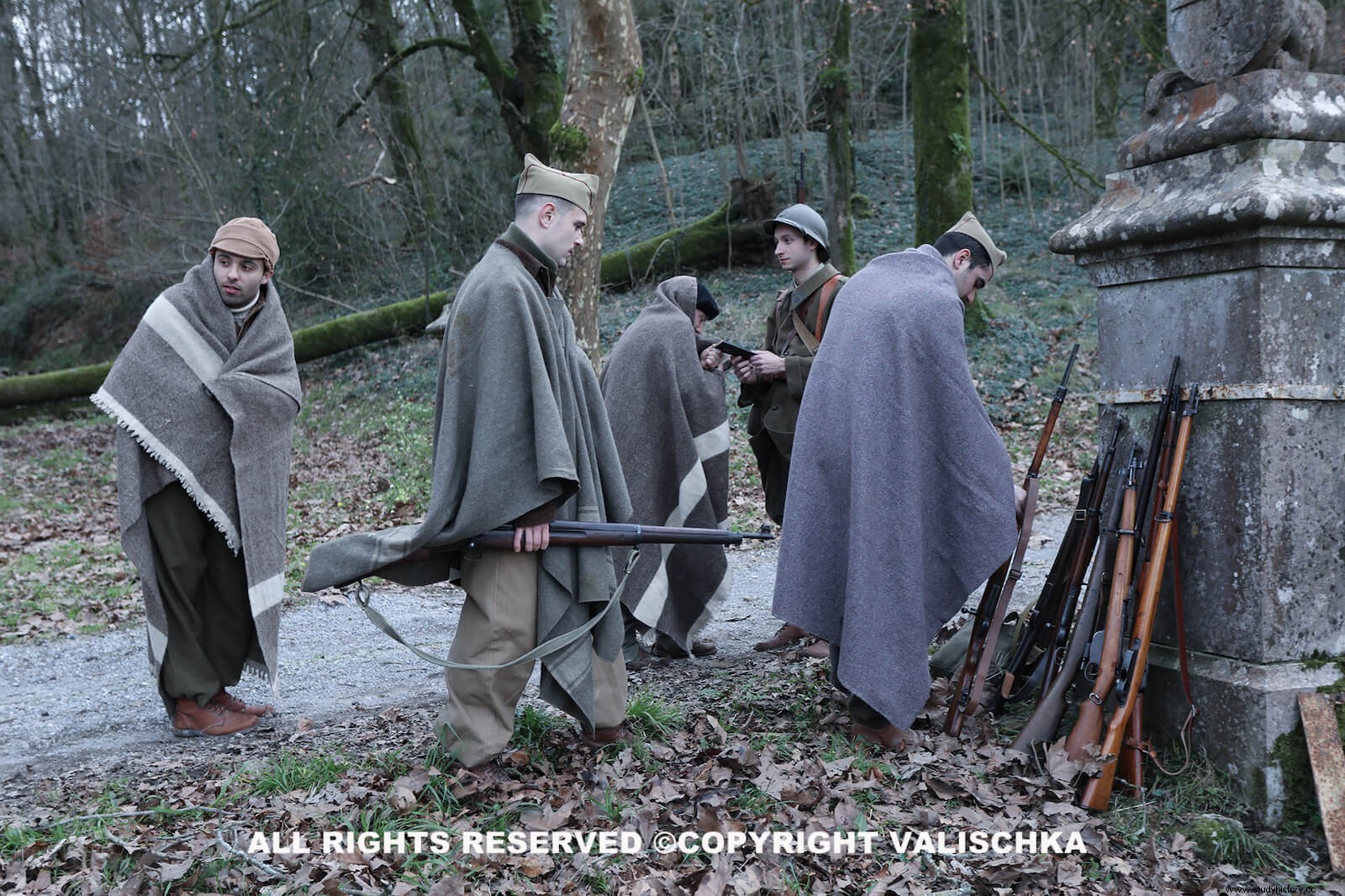
The Retreat chronology It begins after the battle of the Ebro, on December 23, 1938, when the rebel troops began an offensive along the Segre River that managed to cross the front and the different and weakened lines that the Republicans were opposing in order to delay their advance. Barcelona fell on January 26, 1939 and a week later the Francoists found themselves a few kilometers from the border, which was "crowded with refugees on their way to exile" (7), and whose situation worsened as the days went by, arriving even to be temporarily closed by order of the French Minister Daladier. On January 28, civilians were allowed to pass and from February 5 also to combatants. As Geneviève Dreyfus-Armand (8) points out, everyone feared the repression of the victors and made the decision to go to France as "the only escape".
The harsh winter conditions worsened that tremendous human drama that the French were unable to foresee and the measures applied to the refugees at the time were tremendously restrictive and inappropriate for a country in which, until very recently, a left-wing coalition had governed, starting with the decree that provided for the internment of “undesirable foreigners”. The republican combatants were disarmed at the border by French soldiers and policemen and transferred to camps such as Argèles-sur-Mer, 35 kilometers from the border, and only the luckiest, such as those for whom the Basque delegation obtained visas – barely 100 people a week – were able to avoid those inhuman conditions in which men, women, children and the elderly were confined, surrounded with barbed wire and watched by the French army. Soon they began to take their toll on "hunger, cold and diseases such as dysentery, scabies and typhus" (9). The conditions in which that population confined in the different camps in which they were distributed (Saint-Cyprien, Le Barcarès, Les Harras, Gurs, etc.) was pressured by the French authorities led to the despair of many of enlist in the Foreign Legion and the Companies of Foreign Workers (Compagnie de Travailleurs Etrangers, CTE, in its French acronym), taking part in that country's war effort in World War II, while others chose to take the path of return to Spain, but that is another story.
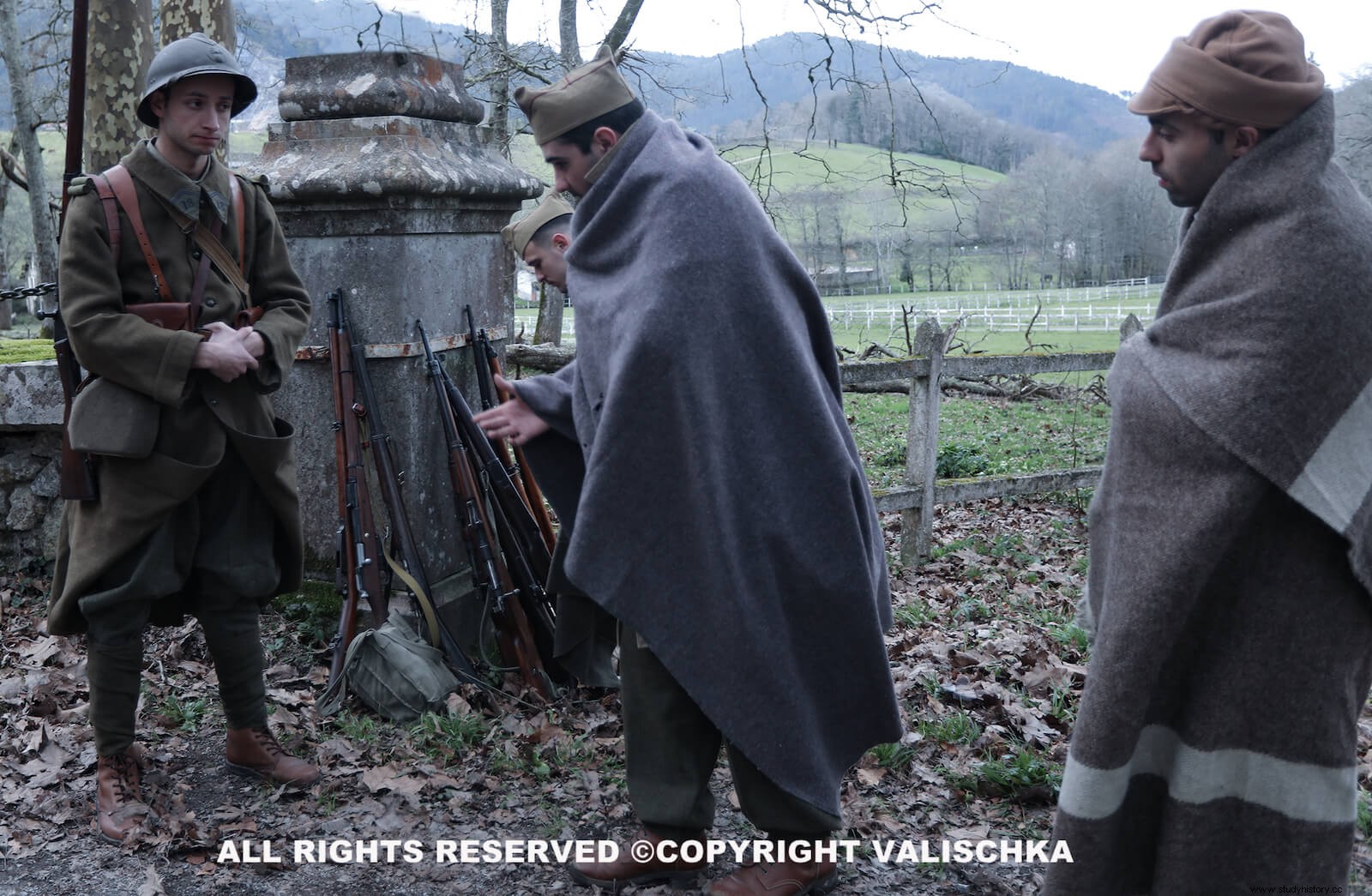
Historical recreation and memory of La Retirada
As we have recently insisted when speaking of historical recreation, it can value both tangible and intangible heritage, especially in the case at hand, commemorating certain anniversaries that are not always are covered by the media and that we have been sharing with all of you in this very blog, whether in the case of the 80th anniversary of the Battle of Karelia, the 80th anniversary of the attack on the Pearl Harbor Naval Air Base or the 100th .º of the birth of Berlanga. Remembering, not only do we endure an uncomfortable past, as Javier Rodrigo (10) says, but we can also empathize with the generation of the Civil War and exile, and that is where historical recreation comes in as an alternative that provides us with the materials for it, allowing an immersion that begins first with the re-enactor himself and then moves to the public – although the scenery that we propose here was private, following the work dynamics of our project, we did not is its result, as the photographs that accompany this article show–, since the objective of all this work continues to be to make memory visible, but from the point of view of respect for historical truth, because today and here we are not interested in a mythologized and even fictitious vision of it, as if it happened during the tribute we paid to the movie La heifer . In this way, in the images we have sought the symbolism of the cairn and the chains to represent the limit of the border and the physical separation of the republican combatants, who are given way by a French soldier on his way to a "captivity" that they cannot imagine. , although their eyes are still on what they leave behind. To one side, the piled-up rifles remain, reflecting the defeat of the entire Popular Army at the end of the Civil War. Obviously, we have been inspired by original photographs, which constitute true graphic documents.
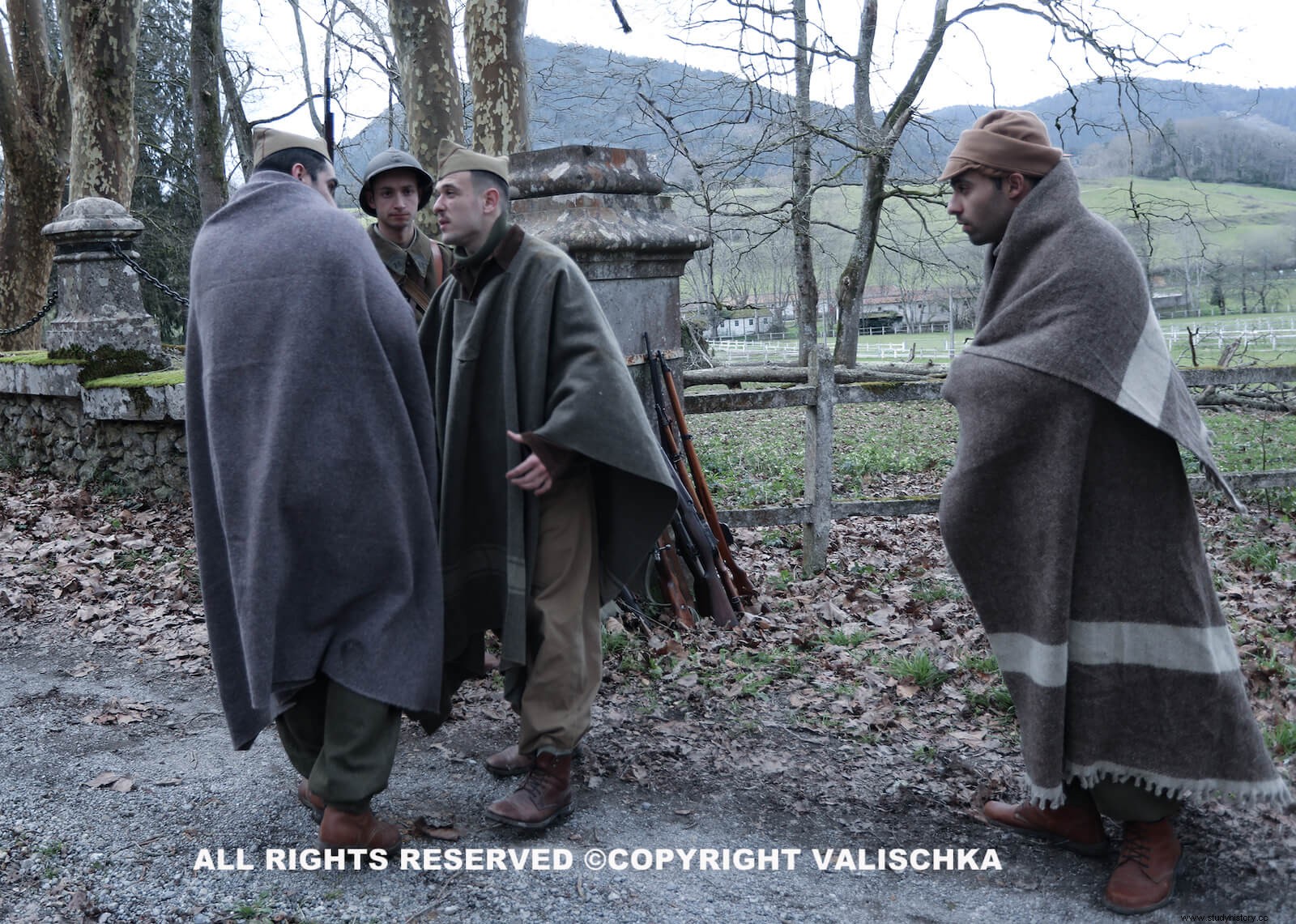
With this initiative we only join many others that have been echoing the drama of exile that symbolizes this historical event, with the ultimate goal that this and other proscribed memories, as Rodrigo says (11), remain present in a public debate from which they were away for years, something that in this case happened on both sides of the border, both in Francoist Spain and in Gaullist France. For example, in recent years we have known the experience of artists who suffered it, such as Josep Bartolí (12), Paco Roca's comic The angel of withdrawal (13) and numerous articles in the media, also in the neighboring country:France24, Radio France Internationale, El País, Eldiario.es, El Periódico de Catalunya, La Vanguardia, El Confidencial, etc. The museum scope of the historical space that constitutes La Retirada –although in a broader sense, as we pointed out above, because of what the concept of border means– allows us to approach it through the routes that cross the Pyrenees along the roads of Cerdanya, Ripollés and Alto Ampurdán, memorials, interpretation centers and other resources such as videos and websites (14). The photo session was held on Sunday, February 13, 2022 to coincide with the 83rd anniversary and it took place at the entrance to the Palacio Munibe, in the municipality of Etxebarria (Bizkaia), thanks to the kind collaboration of the Bilbao-Bizkaia Film Commission and the Provincial Council of Bizkaia, owner of the estate. One of the most renowned photographers in the world of historical re-enactment, Valischka, was in charge of the photography, and once again he has captured all this re-enactment effort in evocative images. They were responsible for the composition of the characters Egoitz Ereño, Iñaki Peña, Mikel León, Iker Baz and Eneko Tabernilla, whom we would like to thank for their work, as well as our friend Fernando Alcoya, from the Primera Línea group, who shared this day with us .
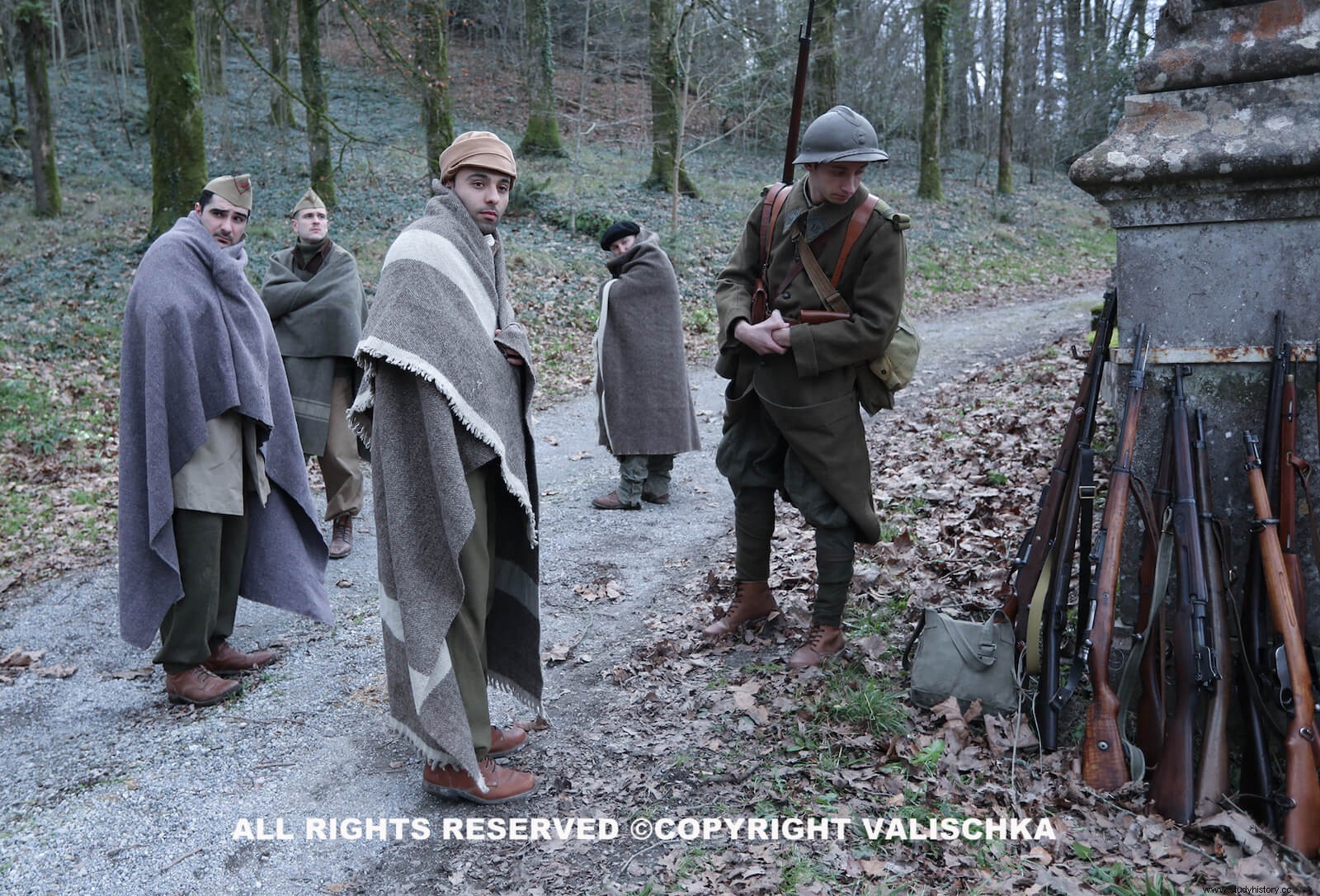
As we said at the beginning of this article, we want to dedicate it to all those who are forced to exodus as victims of war, or of any other misfortune , taking responsibility for theirs just like the Joads in Steinbeck's novel that Ford would portray for the cinema in The Grapes of Wrath barely a year after the events that we have discussed here, without ever losing their dignity, whether on their way to exile or to any other uncertain destination, holding hands in the hope of achieving a better world for their children, as symbolized by that photo of the mutilated girl accompanying her father in Prats-de-Mollo (15).
Notes
(1) Jesús Javier Alonso Carballés:“The first exile of the Basques” in Contemporary History nº 35 (2007). Pp. 684-686.
(2) Pedro Barruso. (2006). The Civil War in Guipúzcoa. Hiria:Donostia. Q234.
(3) Pedro Picabea Salbide:“The population in the Basque Country (1900-1930). Evolution, growth factors and structure of the social collective at the beginning of the century” in Vasconia:Cuadernos de historia-geografía nº 16 (1990). P. 101.
(4) Guillermo Tabernilla and Ander González. (2018). Basque fighters in World War II. Wake up Ferro:Madrid. Q18.
(5) Maria Feliu Torruella and Francesc Xavier Hernández Cardona. (2013). Didactics of the Spanish Civil War. Grao:Barcelona. Pp. 35-38.
(6) Ibid, p. 47. There are several testimonies collected by the bibliography of those who lived the experience of La Retirada; We will highlight here, for his analysis of the symbology of the border in the exile generation, the references to Manuel Azaña, Federica Montseny and others in Giuliana Di Febo:“A space of memory:the crossing of the French border by Spanish exiles . President Azaña's Farewell” in Alicia Alted Vigil and Manuel Aznar Soler (eds). (1998). Literature and culture of the Spanish exile in France. Cabbage Serpa Pinto nº2. AEMIC-GEXEL:Salamanca. Pp. 467-482.
(7) Guillermo Tabernilla and Ander González. Opus cit. Q19.
(8) Stéphanie Trouillard:"The Retreat:80 years since 475,000 Spanish refugees arrived in France."
(9) Christian Rojo:“Argelès:memories of the Spanish exile in the south of France”.
(10) Javier Rodrigo:“The myths of the historiographic right. On the memory of the Civil War and Spanish-style revisionism” in Historia del presente nº 4 (2004).
(11) Ibid.
(12) Silvia Ayuso:“Josep Bartolí, the forgotten art of Republican exile”.
(13) Anna Abella:“Paco Roca recalls the republican exile in France in cartoons”.
(14) Among the videos of La Retirada we will highlight the one by Radio France Internationale (RFI), with interesting archive images, the one by El País, about the Argèles countryside and the of TV3 that travels the routes. Speaking of routes, the information provided in fenturisme.cat is very detailed, while on the other side of the border the complete website of the Mémorial du camp de Argèles should be highlighted with detailed information and resources on boarding schools, which serves as a reference for a visit to the exhibition space on the field.
(15) Josep Playà Maset:“Obituary. Amadeo Gracia, the boy from Prats de Molló”
Image gallery of La Retirada
© Valishka Photography

